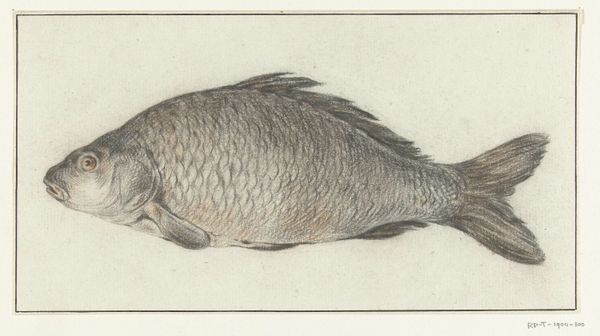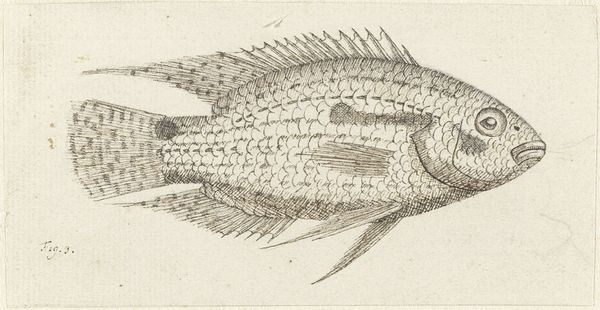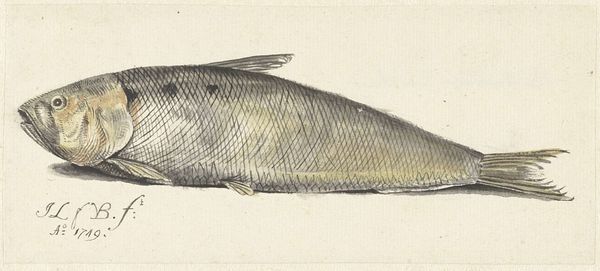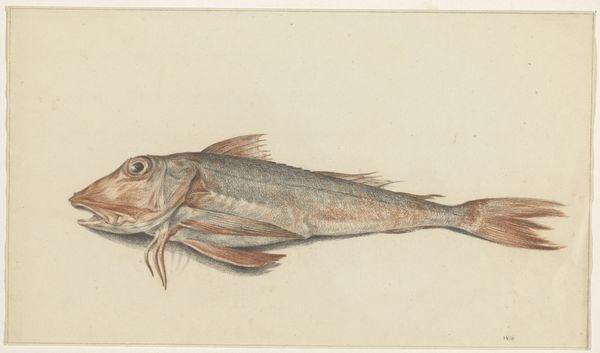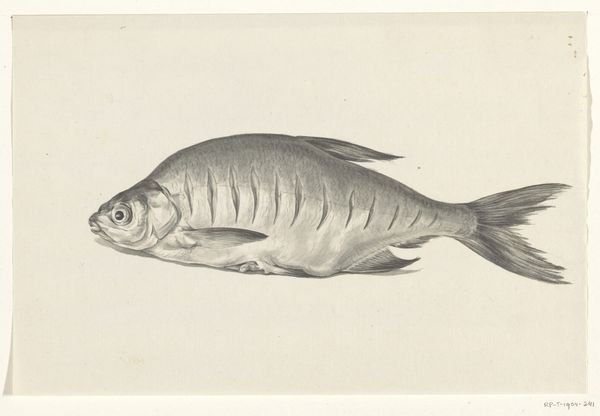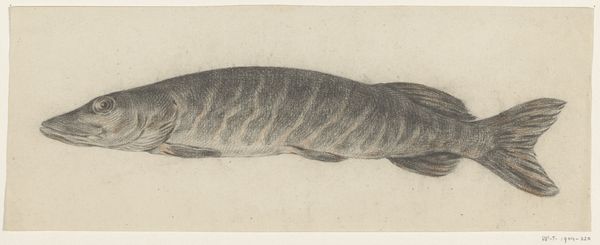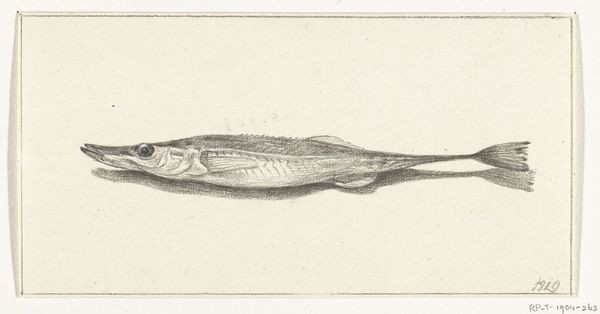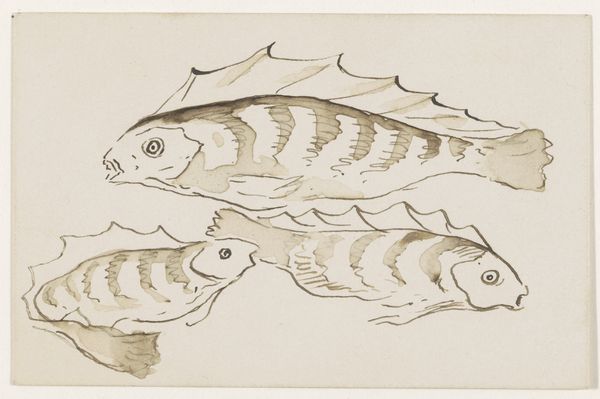
#
pencil drawn
#
toned paper
#
light pencil work
#
pencil sketch
#
old engraving style
#
personal sketchbook
#
sketchbook drawing
#
pencil work
#
watercolour illustration
#
botanical art
Dimensions: height 113 mm, width 213 mm
Copyright: Rijks Museum: Open Domain
Curator: Jean Bernard's drawing, "Vis," likely created between 1775 and 1833, offers us an intriguing glimpse into the intersection of art and natural history, now residing here at the Rijksmuseum. Editor: My first impression is of a wonderfully precise yet subdued study. The limited palette and delicate linework create a quiet, contemplative mood. The texture especially looks incredibly tactile. Curator: Indeed. It is representative of a period when scientific illustration flourished, fueled by Enlightenment ideals of empirical observation and documentation. These works weren't merely aesthetic; they served crucial roles in disseminating knowledge about the natural world. How do you see the use of line functioning here? Editor: The artist utilizes hatching and cross-hatching quite effectively, giving volume and dimension to the fish's form. There is real control here. See how those delicate strokes define the scales, subtly shifting to capture the way light plays across the body. I’m drawn in particular to the precise rendering of the fins, which appear almost translucent. Curator: Consider the historical context. Drawings such as this one were integral to building collections of knowledge about various animal and plant species during this time, for both amateur and scholarly purposes. Think about the development of zoology as a field. An image like this allowed people, including those who would never see this kind of fish in person, to familiarize themselves with this new area of the world's discoveries. Editor: I see what you mean. The careful observation definitely transcends mere documentation. Though restrained, the artist seems to find beauty in capturing the inherent patterns and textures of this living being, using formal choices to instill significance. Curator: This type of imagery helped shape European perceptions about the diversity of the natural world and played an integral role in shaping our understanding and appreciation. I always appreciate these works on paper. Editor: Absolutely. Looking closely allows a deeper understanding of how a simple arrangement of lines and colors embodies both observation and artistic vision.
Comments
No comments
Be the first to comment and join the conversation on the ultimate creative platform.


